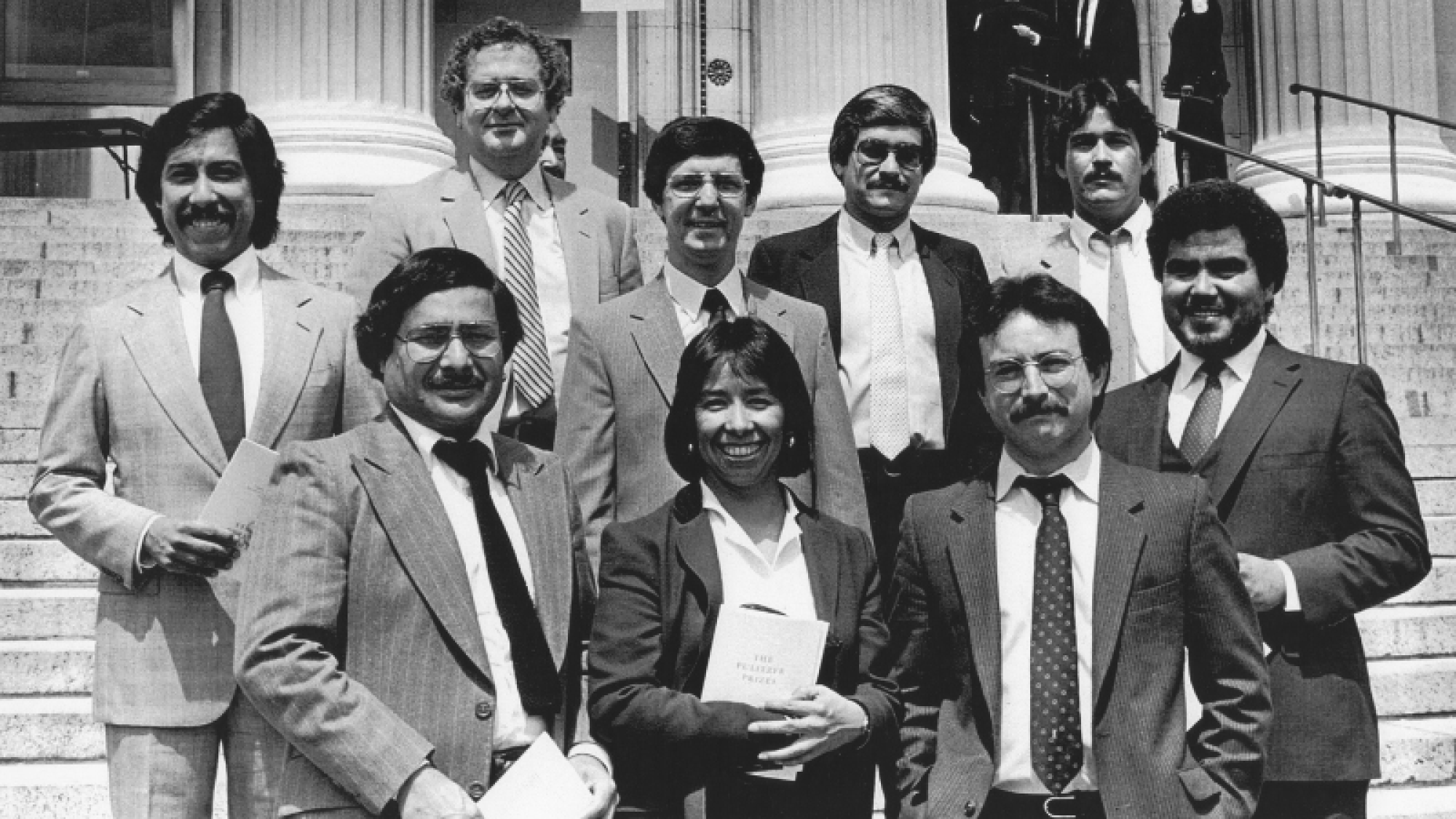
- Share via
In the summer of 1983, the Los Angeles Times published a series of stories that focused on Latinos in Southern California. These were reported, written, edited and photographed by a group of 13 Mexican American journalists who had grown tired of the stereotypical portrayals of their community.
The group aspired to paint a fuller, more nuanced picture that went beyond the image of a gangbanger.
“We keep seeing the same damn stories in the paper. About crime, gangs, illegal immigration. We want to tell our stories,” George Ramos, one of the leaders of the project, proclaimed in 1982.

And tell our stories they did, focusing not just on our labor, but also on our creativity and dreams, on our faith and successes. They reported on families who had been in California for four generations and those who had just arrived from Central America. They wrote about people’s relationship and struggles with Spanish and the lack of Latino role models.

For the record:
6:02 p.m. July 11, 2023In an earlier version of this article, a caption accompanying a group photo at Columbia University said it was taken in 1983. The photo is from 1984.
Four decades later, this landmark piece of journalism still feels relevant. This story by Frank Sotomayor, which also contains one of my favorite quotes ever (“To be Latino in Los Angeles is as close to heaven as you can get”), could have very easily been written today.
Which brings me to De Los.
We are a team of Times journalists and outside contributors who believe that there is value and dignity in our stories, and we intend on telling as many of them as we can. We aren’t trying to reinvent the wheel; we’re simply hoping to pick up the mantle of our predecessors.
De Los has assembled a team of Latino reporters, editors, illustrators and creatives to tell stories not just about our community, but for our community.
We want to take on the lack of representation of Latino stories in mainstream media. We will focus on topics of culture and identity that go beyond those stories about crime and violence.
We also realize that our readers also want to consume stories in different ways. We will have a strong presence on social media platforms such as Instagram and TikTok, where younger audiences are increasingly getting their news.
A lot has changed in the last 40 years. Latinos now account for nearly half of L.A. County’s population (in 1983, that figure was closer to 25%) and nearly 20% of the country (that’s more than 60 million people). In that time, we’ve transformed from being a community largely made up of immigrants to one where the majority of us were born in the United States.
The concept of what it means to be Latino has evolved as well. The Spanish language is no longer the end-all-be-all marker of Latinidad it once was, and as a result, you now have several generations doing their best to connect with one another in new and exciting ways.
We don’t intend to be the only place to find Latino content at The Times. On the contrary, we exist to complement and supplement the great work our colleagues are doing.
Nor are we claiming to be experts on Latinidad — anyone who says they are is lying to you. Rather, our job is to explore the contours of Latinidad, the good and the bad. We see ourselves as observers and chroniclers of a community coming into its own.
With De Los and our new community editor, the Los Angeles Times is taking another step toward improving our coverage of local communities of color.
Much like Latinidad itself, we are a work in progress, and the only way this project is going to work is if we get buy-in from the community we are hoping to serve. That’s the reason why all of our work is going to be in front of the paywall, and why one of our first hires was a community editor.
We invite you to get involved. Tell us what’s missing from the conversation and point out our blind spots. Hold us accountable or send us a line of encouragement at [email protected].

Get Involved
More to Read
The Latinx experience chronicled
Get the Latinx Files newsletter for stories that capture the multitudes within our communities.
You may occasionally receive promotional content from the Los Angeles Times.









